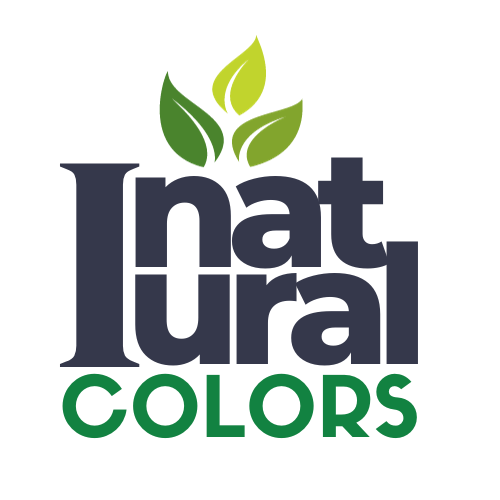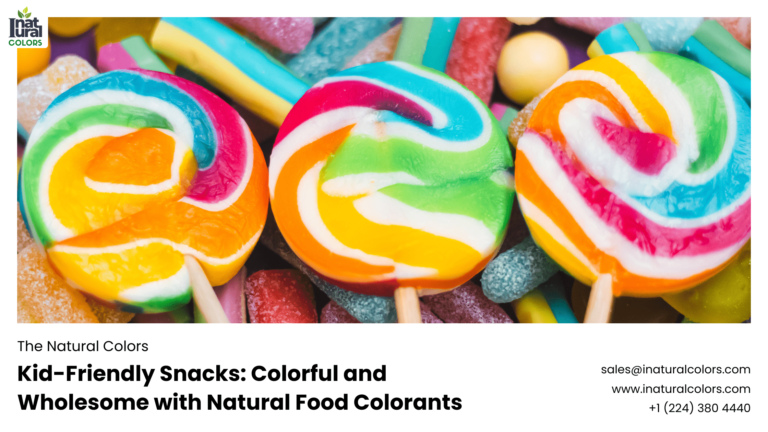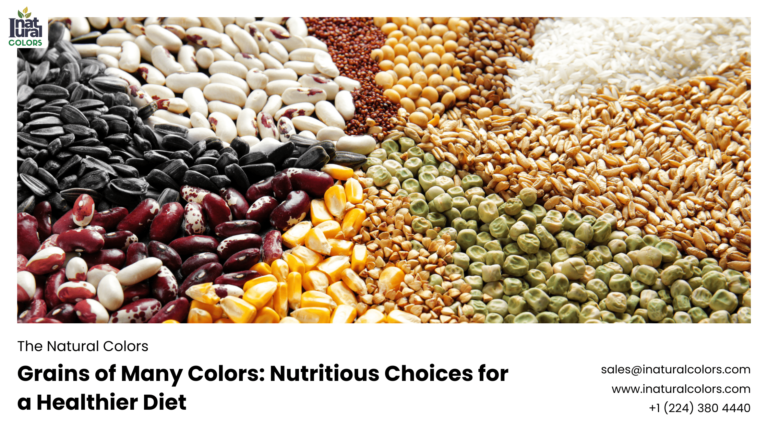Beautiful Plants For Your Interior

Trending Natural Food Colors: What’s In? Embracing Vibrant & Clean-Label Vibrancy
Consumers today are increasingly health-conscious, prioritizing natural ingredients and clean labels in their food choices. This trend extends to the realm of color, where artificial food dyes are falling out of favor and natural food colors are taking center stage.
This shift is driven by a confluence of factors, including:
- Health Concerns: Artificial food dyes have been linked to a variety of health concerns, particularly in children, such as hyperactivity, attention deficit disorder (ADHD), and allergies. While the research is ongoing, consumers are opting for the perceived safety of natural alternatives.
- Demand for Clean Labels: Clean labels signify that a product is free from artificial ingredients, preservatives, and other additives. Natural food colors perfectly align with this growing demand, allowing food manufacturers to create visually appealing products without compromising on clean labeling principles.
- Vibrant & Unique Colors: Natural food colors can achieve a wide range of vibrant and eye-catching shades, dispelling the myth that artificial colors are necessary for visual appeal. From the sunny hues of turmeric to the deep purples of ube, natural options offer a delightful and unique color palette.
This article delves into the world of trending natural food colors, exploring the science behind them, their functional properties, and exciting applications across the food and beverage industry.
Unveiling the Power of Natural Food Colors
Natural food colors are pigments derived from plants, vegetables, fruits, minerals, and other natural sources. Unlike artificial colors, which are often synthetically manufactured, natural colors are extracted using physical methods like pressing, grinding, or fermentation.
These natural pigments belong to various chemical classes, including:
- Carotenoids: These yellow, orange, and red pigments are abundant in fruits and vegetables like carrots, tomatoes, and paprika. They are known for their antioxidant properties and potential health benefits.
- Anthocyanins: These water-soluble pigments are responsible for the blue, purple, and red hues of many fruits and vegetables, such as blueberries, cherries, and red cabbage. They are rich in antioxidants and may offer anti-inflammatory benefits.
- Chlorophylls: These green pigments give plants their characteristic color and play a vital role in photosynthesis. Chlorophyll has detoxifying properties and may support gut health.
- Curcumins: Curcumin is the primary curcuminoid in turmeric, responsible for its bright yellow color. It possesses potent anti-inflammatory properties and is linked to various health benefits.
A Rainbow of Possibilities: Popular Trending Natural Food Colors
The natural food color landscape offers a diverse and exciting range of options, each with its unique properties and applications. Here’s a closer look at some of the hottest trends:
- Vibrant Reds & Pinks: Beetroot powder, pomegranate powder, and hibiscus extract are all gaining popularity for creating stunning red and pink hues. Beetroot powder is not only a natural coloring agent but also a good source of vitamins and minerals.
- Earthy Browns: Caramel color, derived from heating sugars, and cocoa powder are popular choices for achieving rich brown tones. Caramel color adds a touch of sweetness and depth of flavor, while cocoa powder offers a delicious chocolatey taste.
- Bold Blues & Purples: While achieving a true blue with natural colors can be challenging, spirulina extract and purple sweet potato powder offer exciting possibilities. Spirulina is a blue-green algae rich in protein and antioxidants, while purple sweet potato powder boasts a vibrant purple hue and potential health benefits.
- Sunny Yellows & Oranges: Turmeric, paprika, and saffron are classic natural colorings for achieving yellow and orange tones. Turmeric, in particular, is experiencing a surge in popularity due to its perceived health benefits.
- Eye-Catching Greens: Chlorophyll, matcha powder, and spirulina extract can be used to create a range of green shades. Chlorophyll offers a vibrant green color and potential health benefits, while matcha powder adds a distinctive tea flavor alongside its green hue.
Beyond Vibrancy: Functional Benefits of Natural Food Colors
Natural food colors go beyond simply adding visual appeal to food and beverages. Many of these colorants offer functional properties that can enhance the overall product:
- Antioxidant Power: Natural colors like curcumin (from turmeric), anthocyanins (from berries), and carotenoids (from carrots) possess antioxidant properties that can help protect food from spoilage and potentially offer health benefits to consumers.
- Flavor Enhancement: Certain natural colors, like cocoa powder and paprika, not only add color but also contribute to the overall flavor profile of the food.
- Nutritional Value: Some natural colors, like spirulina and beetroot powder, are packed with nutrients, adding a touch of healthfulness to the final product.
Innovation & Sustainability: The Future of Natural Food Colors
The demand for natural food colors is driving significant innovation and research within the food industry. Scientists and food technologists are continuously exploring new sources of natural pigments and developing advanced extraction techniques to enhance color stability and intensity.
Additionally, the focus on sustainability is becoming increasingly important. As consumers become more conscious of their environmental impact, there is a growing preference for natural food colors derived from sustainable sources. This includes reducing waste, minimizing energy consumption, and prioritizing eco-friendly production processes.
Overcoming Challenges & Ensuring Consistency
While natural food colors offer numerous advantages, they also present certain challenges compared to their artificial counterparts. One of the primary concerns is color consistency, as natural pigments can be influenced by factors like harvest conditions, processing methods, and storage.
To address this, food manufacturers are investing in advanced technologies and quality control measures to ensure consistent color performance. Standardization and the development of robust extraction techniques are crucial for maintaining color reliability.
Another challenge is the cost of natural food colors, which can often be higher than artificial alternatives. However, as demand grows and production scales increase, it is expected that the price of natural colors will become more competitive.
Expanding Applications: Beyond Food & Beverage
The versatility of natural food colors extends beyond the food and beverage industry. These pigments are finding applications in various sectors, including:
- Cosmetics: Natural food colors are being used to create vibrant and natural-looking makeup products, such as lipsticks, eyeshadows, and blush.
- Pharmaceuticals: Some natural pigments possess therapeutic properties and are being explored for use in functional foods, dietary supplements, and even pharmaceuticals.
- Animal Feed: Natural food colors can be used to enhance the visual appeal of animal feed and may also offer potential health benefits for livestock.
Consumer Perception & Marketing
Effective communication about the benefits of natural food colors is essential for driving consumer adoption. Food manufacturers need to clearly highlight the use of natural ingredients, emphasizing the connection to clean labels, health, and sustainability.
Marketing campaigns should focus on educating consumers about the science behind natural colors, showcasing the vibrant and appealing colors achievable, and addressing any misconceptions about their safety and effectiveness.
Conclusion
The shift towards natural food colors represents a significant opportunity for the food industry to meet the evolving demands of consumers. By embracing innovation, sustainability, and transparency, food manufacturers can harness the power of natural pigments to create products that are both visually appealing and aligned with consumer values.
As research and development continue to advance, we can expect to see an even wider range of natural food colors available, unlocking new possibilities for product development and consumer satisfaction.



